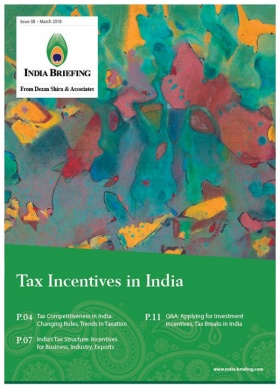Indian Government Notifies New Safe Harbor Rules
On June 7, 2017, the Central Board of Direct Taxes (CBDT) in India revamped safe harbor rules to align safe harbor margins with industry standards and enlarge the scope of international transactions under it. ‘Safe harbor’ in tax parlance refers to the circumstances under which income-tax authorities accept the transfer price declared by the company, at which it transacts with its subsidiaries or an associated company, without any question.
The new safe harbor rules come into effect from April 1, 2017, and will continue to remain in force for two years, up to the assessment year (AY) 2019-2020.
Transfer pricing rules in India state that multinational companies (MNCs) involved in cross-border trade with subsidiary companies must compute their transaction income based on the arm’s length principle, that is, the amount payable if the trading companies were unrelated.
The provision is meant to avoid the under-reporting of income by MNCs and prevent them from evading taxes by transferring it to their group company located in a tax-friendly jurisdiction.
However, rigorous auditing by Indian authorities and the complicated process of calculating the ‘arm’s length price’, have, in reality, resulted in a rising number of cases under dispute between MNCs and India’s income tax authorities.
Rationale for safe harbor rules
The Indian government first notified safe harbor rules in 2009, as a measure to curb disputes under transfer pricing audit, reduce litigations, ease compliance, and bring certainty for companies involved in cross-border transaction with their subsidiaries.
The rules offered MNCs a viable alternative to transfer pricing audits, by declaring their minimum operational profits as specified in the safe harbor scheme.
However, these rules met with limited success due to the high profit margins that were set under the scheme, and the ambiguity in the classification of services.
Thus, to address some of the shortcomings of the earlier framework, and more effectively achieve the objectives laid out in the safe harbor scheme, the income tax department has revised existing rules. This enlarges the scope of transactions under safe harbor rules.
The new provisions include:
- Rationalization of safe harbor rate
The new safe harbor rates for information technology services have been curbed to a maximum of 18 percent (from their former 22 percent).
In case of ‘knowledge process outsourcing’ services, a graded structure of three different safe harbor rates of 18, 21, and 24 percent are provided, based on the percentage of the employee cost to operating cost. This replaces the single rate of 25 percent in the previous regime.
The safe harbor rates for contract research and development service that relate to software development and generic pharmaceutical drugs is reduced to 24 percent from 30 and 29 percent, respectively.
- Upper turnover threshold
The new regime is applicable for transactions up to US$31 million (Rs 200 crore) in relation to software development and information technology-enabled services, knowledge process outsourcing services, and contract research and development services that are wholly or partly related to software development and generic pharmaceutical drugs.
- Receipt of low value-adding intra-group services
Finally, a new category of transactions has been included under the updated rules – Receipt of Low Value-Adding Intra-Group Services.
Taxpayers eligible under the present regime up to AY 2017-18 may choose the safe harbor option that is most beneficial to them.
About Us
India Briefing is produced by Dezan Shira & Associates. The firm assists foreign investors throughout Asia and maintains offices in China, Hong Kong, Indonesia, Singapore, Vietnam, and Russia.
Please contact india@dezshira.com or visit our website at www.dezshira.com.
- Previous Article Beef Ban in India: Repercussions for Meat, Leather, and Dairy Industries
- Next Article India Abolishes FIPB. What Does it Mean for Foreign Investors?










